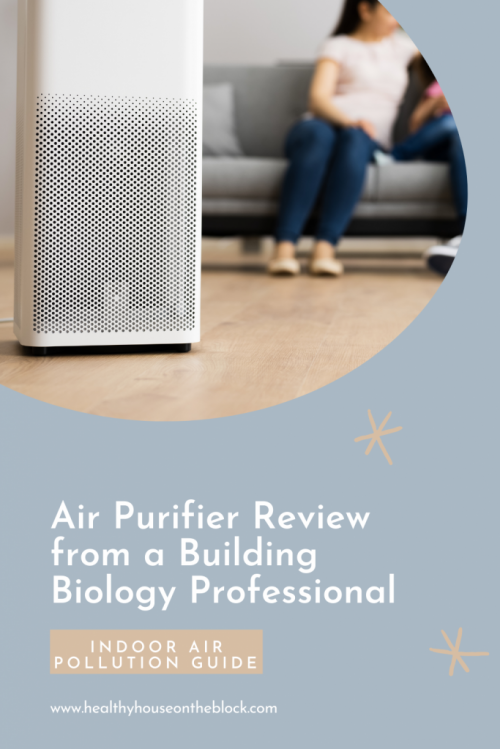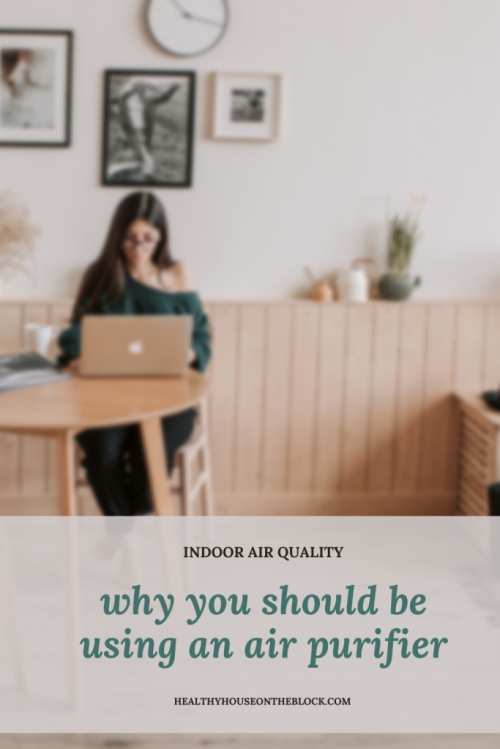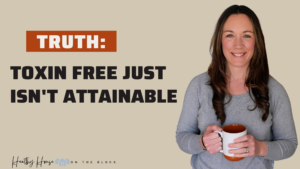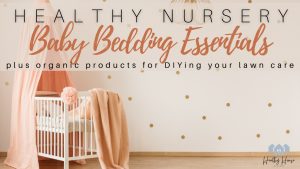
Indoor air purifiers are not a new phenomenon — In fact I can remember an air purifier we had at home when I was a teenager. I’m sure it was ordered out of catalog and the truth is it may have just been a step above a fan, but the concept of cleaning our indoor air has been around for a long time. This past year we decided it was time to buy the best indoor air purifier as we were bringing a baby home in the midst of a global pandemic. I started shopping, reading studies and air purifier review after review to figure out what we needed.
Little did we know we’d be bringing home a baby with medical needs for the first six months of his life and with came a group of nurses coming in and out of our house too. I was so glad that we ended up with the air purifier we did. If we didn’t buy the best air purifier before Cameron was born, I know we would have searched for all those air purifier review sites after he was born knowing what we know now.
Air purifiers are such a useful tool to improve the indoor air quality at home. Oftentimes we don’t even know what’s in our air at home and so it doesn’t click with us to purify it or clean it. I often say, “You can’t change if you don’t know”. Basically, if you aren’t aware that there’s a problem, why would you ever change what you’re doing?
And with something like indoor air, we rarely know it’s a problem until we seek out information on correcting another issue we become aware of either with our homes or within our bodies. This is why poor indoor air quality is such a silent problem with so many homes — we can’t see the problem until the effects are known, and even then, we don’t always link the problem to our indoor air.
The fact that you’re here, reading this, means you’ve got a leg up on most families and you’re indoor air quality will likely be much better than the average home. This information I’m about to share is particularly important if you have family members who suffer from asthma or allergies — but we can all benefit from the positive effect air purifiers have in our homes.
WHY PURIFY INDOOR AIR?
Indoor air that is “stuck” and has improper ventilation and no place to go can quickly become polluted to an unhealthy level. Between our energy efficient homes and our daily living habits, our homes have become an environment with some of the worst indoor air quality around.
In fact, more than half of the air that you inhale over your entire life will be from air inside your home. This can mean that most illnesses related to any sort of environmental exposure are actually coming from indoor air exposure. And this isn’t a new concept at all. In reading “The History of Indoor Air Quality and Health”, we learn that indoor air has been thought of as a major environmental factor since around 1850. It wasn’t until the 1960s when this idea became overshadowed by outdoor environmental air issues. The need for cleaner indoor air has been a problem to our health since the period of time when humans began living indoors. Throughout history we’ve seen that there is an awareness of poor, unventilated, indoor air being linked to poor health — even before Jesus’ birth. (SOURCE)
Essentially, in the distant past there were concerns, but now those concerns are even greater due to the way our homes are built. Buildings are SO much more energy efficient today even compared to 30 years ago. While this improvement is often a good thing, it does allow toxins to build up in the home at a much higher rate. (SOURCE)
There are several different categories of indoor air pollutants, and I won’t get into all of them, but we’ll cover the big ones and what they’re from based on this study. The big ones that go hand in hand with air purifiers are particulate matter, volatile organic compounds (VOCs), pesticides, biological allergens and microorganisms (This doesn’t include heavy metals and gases, which are also harmful to the indoor air).

SCIENCE LINKS POOR INDOOR AIR QUALITY WITH HEALTH PROBLEMS
Each indoor pollutant in your home has a particular size of the matter, which is measured in microns. The smaller the micron, the more difficult it is to remove it from the air in your home. And each set of indoor pollutants has a different health effect on your body. Let’s take a look:
Particulate Matter: Particulate matter is a mixture of solid particles with liquid droplets found in the air. Particulate matter can come in all different sizes based on what the particulate matter is from. Often it’s from dust, dirt, soot, and smoke. The smaller the particles, the more dangerous they are to your health as they can get into deep parts of your lungs and even into your bloodstream.
Particulate matter has been associated with an increased risk of cardiovascular disease, disruption of the endocrine system, and contribution to metabolic diseases. (SOURCE)
VOCs (Volatile Organic Compounds): VOCs are inhaled and absorbed through the skin as well as ingested through food sources and non-dietary sources (SOURCE). Interestingly, it may actually be worse for the health of our bodies to absorb toxins through the skin as the toxin does not encounter the same detoxifying enzyme that an ingested toxin would experience before it enters the bloodstream.
VOCs can come from building materials, our furniture, cleaning products, personal care products, plastics, and adhesives and preservatives. (SOURCE) Formaldehyde is one of the most well known and prevalent VOCs in our homes. Formaldehyde, for one is a carcinogenic: it has been known to cause cancer. Other long term effects of concentrated VOCs in your home are diseases like asthma, reduced pulmonary function, increased risk of tumors and severe respiratory problems. In recent years, they’ve also been linked to skin irritation and inflammation, damage to the liver and kidneys and negative impacts on our blood system. (SOURCE)

Pesticides: Believe it or not pesticides are widely used on more than just our food products. Our wood products and wood materials in our homes have often been treated with a type of pesticide to keep the wood well, pest free. Fabrics and textiles also can have pesticides in the fibers from treated cotton plants. In addition to that, we can track pesticides inside on clothing and shoes that have been outside. (SOURCE)
Pesticides, once in our homes, can stick around for months or even years because they’re created to protect against sunlight, rain and other factors that may break them down. Pesticides have been linked to hormone disruption and cancer as well as asthma and diabetes. (SOURCE)
Biological Allergens: Biological allergens are things like dander, dust, dust mite, mold and pollen. Oftentimes the response to this is an allergic type response, asthma, and other respiratory diseases (STUDY). This is often even more severe in children and elderldy who are in contact with these biological allergens (SOURCE). Some individuals can have severe, infectious or toxic reactions creating severe problems in the lungs and respiratory system (SOURCE)
Microorganisms: This includes contaminants like fungi, viruses and bacteria. Obviously viruses are something most of us try to avoid on a frequent basis, but here they are, present in our homes. Oftentimes we bring viruses into the home either ourselves or by an object that contains the virus on it.
Humans are also the main source for bacteria in the home, however it can also be present from water in the home as well. And this leaves us with fungi, which if not eradicated, can produce mycotoxins which are extremely harmful to our DNA. (SOURCE)
Microorganisms in our indoor environment can lead to chronic health issues like allergic dermatitis, chronic airflow obstruction, chronic bronchitis and asthma.

HOW DOES AN AIR PURIFIER WORK?
After hunting to buy the best air purifier I realized I had learned A LOT about how an air purifier even works. There are different types of air purifiers, but MOST use a fan and a filter. And how well your air purifier works depends on the grade of your filter.
But, first, most air purifiers have a motor and fan that pulls air from the room into the unit. The air is then forced through a filter media and then returned to the room. Now, the trick is to run your air purifier pretty much constantly. When you do this, the indoor air continues to be cycled through the filter, improving it each time.

Other types of indoor air purifiers can use a UV light system, however this only kills bacteria, viruses and fungi and doesn’t necessarily remove other contaminants.
And still another type of indoor air purifier is one that uses a type of electrical attraction. Obviously this version is much more scientific and complex in comparison to a fan option. Electrical attraction uses a negative ion generator to attract the positive pollutant ions into the purifier. Unfortunately, a lot of the toxic ions end up attaching themselves to furniture, walls and floors and don’t end up getting trapped in the air purifier.
There are also purifiers where they utilize all three of these different methods to purify your air.
So, if you want to buy the best air purifier, which one do you go for? I personally like the fan and filter option, but there are a few specific things you want to look for to make sure that it is in fact purifying your air.

HOW TO SHOP FOR AN AIR PURIFIER
Filters: The filter is probably the most important and talked about part of an air purifier. Before you read pages and pages of air purifier review after review, make sure you know exactly what you’re looking for first. You want to make sure your air purifier has an H13 True HEPA filter. This is also referred to as a medical grade HEPA filter. This type of filter will capture particles down to .1 microns – 99.9% of all particles.
The reason many air purifiers don’t use the HEPA H13 filter is because it is SO good at capturing particles that it covers less square footage.
Another word or warning when reading an air purifier review is to run from the term “HEPA Type” filter. Basically it’s an unregulated term and essentially means it’s not a True HEPA filter.
Airtight Seal: In order to keep pollutants from re-entering the air, an airtight seal is needed, otherwise the pollutants escape and we’re back at square one. Many air purifiers use multiple filters for this very purpose

Square Footage: If you know where you’re going to put an air purifier, you’ll want to find out the square footage of your space.
Carbon: Carbon is a media filter that can help get rid of odors and other toxins that a pre filter won’t catch. Sometimes you can find filters that utilize both a HEPA filter AND a carbon filter. I think this is the best of both worlds. Carbon filters usually remove gasses and unpleasant odors, but don’t remove fine particles like mold, dust or pollen.
Fan: Okay, we are a white-noise family. Everyone has a white noise machine in their room and everyone sleeps (for the most part). So, the fan on an air purifier wasn’t a huge deal breaker for me, but it might be for others. If you don’t want a super loud fan, look into if you can run the air purifier at a lower speed in order to keep the fan quiet. Also, look into how many sones the fan is. The higher the sone, the louder the fan.
MY TOP PICK AIR PURIFIER AND AIR PURIFIER REVIEW
In doing months of research on air purifiers and trying to find one that was right for our family, I read pages of air purifier review sites that left me feeling even more confused. But after digging into the facts and using logic, we finally settled on MedifyAir.
In fact, our school district uses MedifyAir Air Purifiers in all of their schools and buildings and so I felt really good about making this decision.
I’m sharing with you my air purifier review for the MedifyAir as a mom and homeowner and building biology practitioner.
Initially we purchased the MedifyAir Air purifier to have in our home when we brought Cameron home. We assumed visitors would want to come over and we weren’t comfortable allowing everyone into our indoor space with COVID-19 at its peak in November.
While we didn’t bring Cameron home until December — after his 48 day NICU stay, I’m EVEN MORE glad we have this air purifier now. Not only did we have nurses coming to our house every week, but we also REALLY wanted to allow visitors in to see our little miracle baby. With his medical needs we knew that his immune system was not functioning as even a normal baby’s would, and we wanted to makes sure he was protected.

I have felt SO confident in the science and technology used in the MedifyAir purifiers that I haven’t thought twice about having visitors — expect to make sure that the air purifier was turned on.
The fan isn’t too loud and I love that it has four different settings on it for some added control. I also love the look of this air purifier. I love clean lines and I like that this purifier looks modern and isn’t an eyesore in the middle of our living room.
If you’ve got kiddos like we do, you’ll also appreciate that it has a child lock on it. You know how kids like to play with your stuff more than their toys, and the air purifier was no exception. But with the child lock you can trust that they won’t be adjusting your settings.
If you’ve got questions that I didn’t answer in my air purifier review, just comment or send me an email — I’m more than happy to answer any question you may have about it.
And if you do decide that you’d like to try the MedifyAir Air Purifier at home, be sure to use my coupon code HHOTB15 to get $15 off your order.




